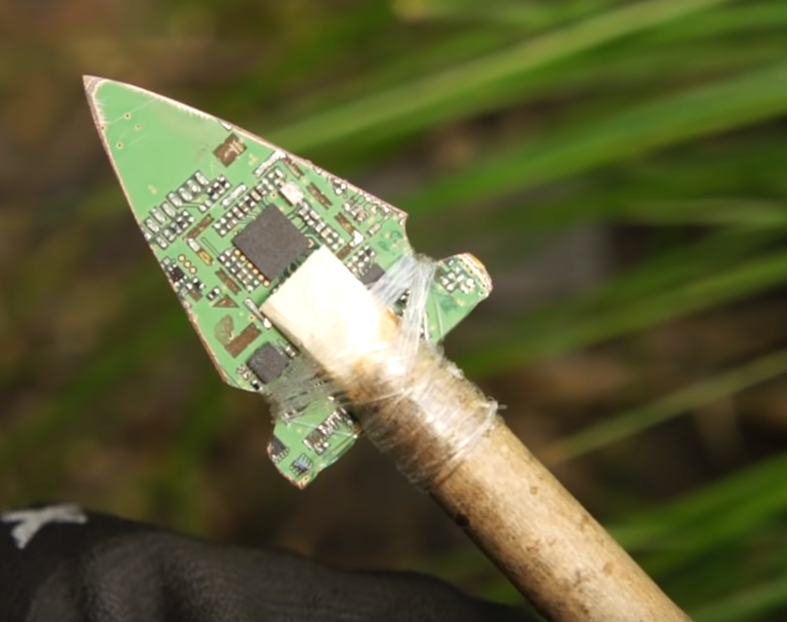Hi,
Since r/NAS is not available and the [email protected] could not provide that much help I am here again to ask stuff ;D.
My 10years old NAS quited work and I am looking for my opportunities. And since I am tinkering with my raspi and am generally interested in selfhosting stuff like jellyfin, joplin e.g. I decided to take the step to build my own Nas instead of buying another Synology device.
I would like to provide my needs but since I am not sure about it it is only a try… Moreover I cannot say where the journey will take me to^^
What I know:
- 4 sata slots so I can use my actual drives and have the option to upgrade
- Transcoding with jellyfin would be nice
- having my own cloud storage is a long term aim
- joplin server
- maybe some terraria dedicated server could be cool also
- low power usage and low noise are two criteria i would consider important since the energy prices only know one direction where I life
- x64 architecture to use debian server or TrueNas Scale (I need to dive deeper into TrueNas before deciding)
My former favorite is this fanless board:
MITAC PD11EHI-J6413 MINI-ITX
Con:
- I realised that the second M.2 slot does not supports M key SSDs but I planned to run the OS on an NVME… and since there is no PCIe the singel M.2 slot with M Key support is the only way to upgrade to 4 sata slots.
My actual favorite (but more expensive) choice seems to be:
MITAC PD10EHI-N6415
Con:
- price (not so much of problem)
ECC compatibility feels unnecessary.
Is there anything that I have forgotten? Any better choices from european vendors? Ordering from america is not an option because it would take forever to arrive and the process to get it from the zoll is time consuming and would put taxes on top.
Thanks in advance 😊
Fyi you will not be able to do live video transcoding with a raspberry pi. I overclocked my pi4’s CPU and GPU and it just can’t handle anything but direct play and maybe audio stream transcoding, though I’ve never had luck with any transcoding period. I either download a format I know can direct play or recently started using tdarr (server on pi, node running on my desktop when I need it) to transcode into a direct play format before it hits my Jellyfin library. Even just using my AMD Ryzen 5 (no GPU) it transcodes like 100x faster than a tdarr node given 2 of the rpi cpu cores. You could probably live transcode with a decent CPU (newer Intel CPUs are apparently very good at it) if you run Jellyfin on the NAS but then you’re at odds with your low power consumption goals. Otherwise rpi Jellyfin is great.
Good luck, I’d like to build a NAS myself at some point to replace or supplement my Synology.
I used to use FreeNAS but found it was to “heavy” for just home and personal use. I felt like it took a lot more steps to just do some simple things.
During my last upgrade, I switched to using OpenMediaVault and have been really enjoying it. I started using Docker with it and that has been an amazing breakthrough in the way I use services like Jellyfin.
I’ve been using SnapRaid for the data redundancy together with MergerFS so all the drives appear and operate as a single big drive. I have SnapRaid sync once a week which sort of acts like a backup in case I accidentally delete something.
OMV is awesome. I like that Portainer is included, it got me into docker containers for running homeassistant, syncthing, cups server etc.
Take a look at Asrock’s mITX Line with builtin Intel chips. I use a J5005 and it has pretty much all that you are asking for:
- 4x Sata (2 fast & direct, 2 share a PCIe 2.0 lane)
- Hardware Transcoding with Intel QuickSync. Works great with jellyfin!
- Completely passive heatsink. No fans necessary!
- Super low TDP. Even at max CPU utilization I scrape along on <25W
- x86_64 and 8 GB of RAM (More is possible, ignore official docs!)
It runs quiet and sips power. It runs quite a few services for me:
- Minecraft server with DynMap (resource hog)
- Nextcloud, Jellyfin, Resilio, Photoprism (Data & Sync)
- HomeAssistant, Vaultwarden, Gitea, paperless, Usenet,…
Nextcloud is snappy. CPU utilization is minimal. RAM is basically empty. I am happy!
You still need a case and a picoPSU, but those are cheap and allow you to properly fit all drives.
I boot off a small 120 GB SSD (slow SATA3), my media lives on a large HDD (slow SATA3) and all docker services, user data and databases are stored on a 2x 1TB SSD RAID (fast SATA).
There’s a free PCIe 2.0 slot on the mainboard which would allow me to add 1 fast SATA3 or 2 more slow ones. The slow ones are ideal for spinning drives.
Both devices you listed are 6000 chips and should be even faster and more efficient. Do they have PCIe 3.0? That would make them twice as fast I/O-wise than my setup!
BTW, stay away from USB HDDs and stick to directly attached SATA or NVMe. Much less finicky, reliably show up after reboot (!) and have SMART statistics! Also, external enclosure are made to look nice but heat up instantly. They degrade performance and life span.
Thank you for your answer. the picoPSU is the next point that causes headaches. I have two questions about the pico.
How to calculate how much energy is needed without knowing how much the board needs? My actual HDDs and planed parts are:
- 2x 6TB WD Red WD60EFAX -> and I found the use 5.3W under load what means even with four of them they only need 21,2W
- a NVME like the WD Blue SN570 with max consumption of 3,75W
- a fan (maybe an be quiet! Silent Wings 4 PWM 120mm) for the case with round about 4W by max Speed sums up to 27,95W But the information about the power consumption for the board is missing.
It seems like a 80 watts picoPSU should be sufficent. What I don’t understand is, how can I supply the power with this psu when it is a 24-pin ATX but the board needs only 4-Pin-ATX?
I didn’t take a closer look at your board, sorry. The picoPSU is of course only possible if you need an ATX-Style power supply. If your board has an irregular connector, you’ll first have to find out what that is and where you can find an appropriate supply. It may be a “12 Volt Only” style connector, which would mean you only really need a fitting 12V power supply.
Your max power calculations look fine.
I have written a mail to the shop and asked them how to supply the power and if it is even possible with a picoPsu. If not, I guess I will take a Asrock instead. Using a regular ATX psu only for the one connector somehow feels not purposeful 🤷🏻♂️
It seems FreeNAS/TrueNAS has a lot of plugins available to do many things onboard. For my part though I like to keep storage separate from compute since it gives me more direct control over the frontend services. To that end my go to is https://xigmanas.com/xnaswp/ which was actually Freenas before a split several years ago, they kept the original design of being more a dedicated NAS system (with a few minor builtns for a basic webserver/torrent service, etc) but it’s more a embedded ‘just serve the drives’ type system. Then putting another box, virtual host/docker box, whatever you like and mounting the drives from there lets you build things up and just dump the backing data to the NAS. Lets you get away with a relatively low power box to just serve up the storage and save the compute power for the heavy working apps.
As for hardware, if it’s just serving drives I’ve gotten away with as little as an old 1.3Ghz with 4GB mini-itx board in the past, though that was only with a couple drives, but I’m sure there are boards that can have a lot more attachments to it. Feasibly even a USB hub with a handful of external drives plugged into a RaspberryPi or similar could do the job. If you’re concerned with data redundancy though having a RAID is a plus, so something like this would be good.
https://www.newegg.com/mediasonic-hfr2-su3s2/p/N82E16816322004
Note that your second choice requires an external ATX PSU (extra noise, likely running less power efficient). You can probably get a PicoPSU or similar, but that drives up the price even further.
I have an old HP microliant server, which has 4 3.5" disk bays, and boots off of a read only USB stick. The one i have came pre-loaded with xpenology, a synology clone, but there are numerous option: ubuntu server, Free/TrueNAS, Xigmanas.
the options are quite endless!


Take a look at the forums/discord over at serverbuilds.net They have some guides specifically for NAS/Server builds.
What was your old NAS?
My old NAS was a Synology DS213j.
I just built a Server using J5040 board. With 16gb ram (yes it works) a 500gb m.2 as system using a PCI adapter , 2x4tb ironwolf as ZFS mirror pool, 350 W power supply all in the node 304 fractal case for 550 euro. It has 4 sata 6 connectors.
Runs proxmox as hypervisor for VM or Container. As example LXC container for motioneye, jellyfin and syncthing.
Ah ok. Asrock is now an option too. Knowing they can handle 16gb of ram is a game changing information. It was the single argument against them. Because the price is much better.





